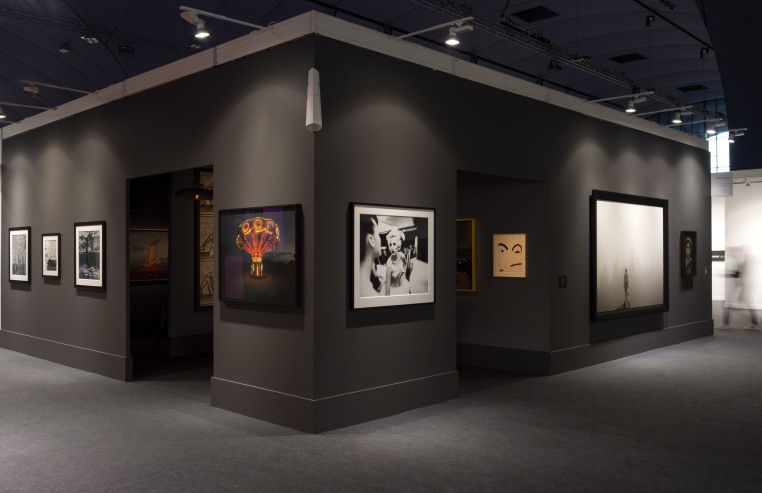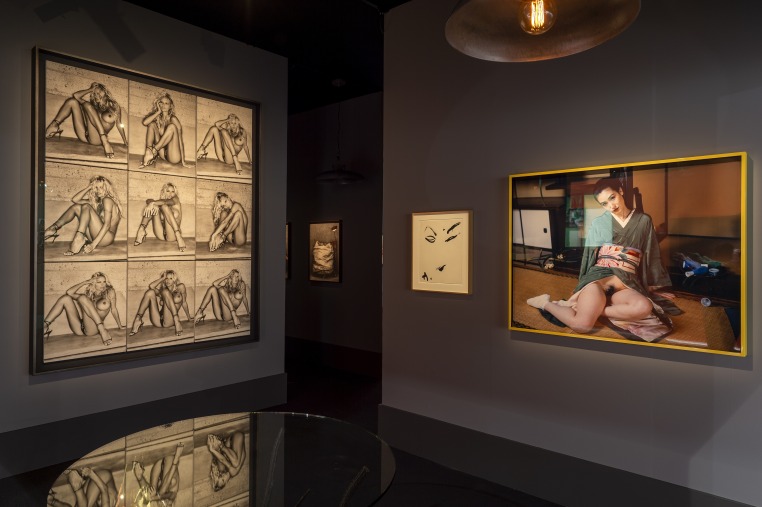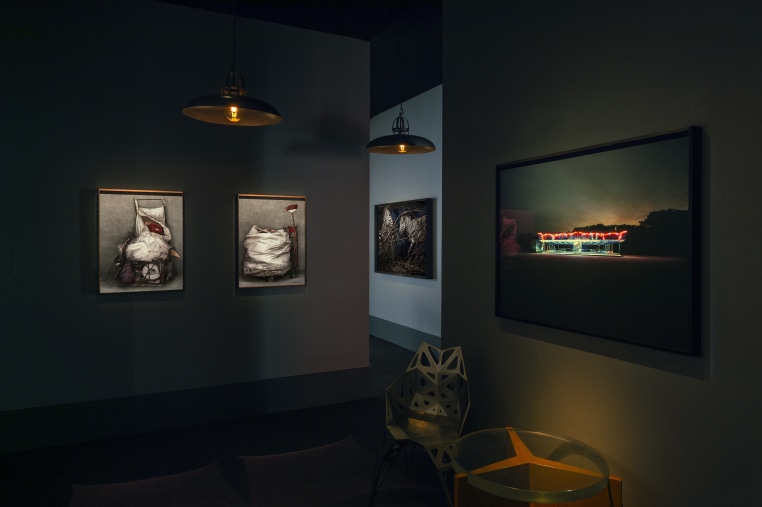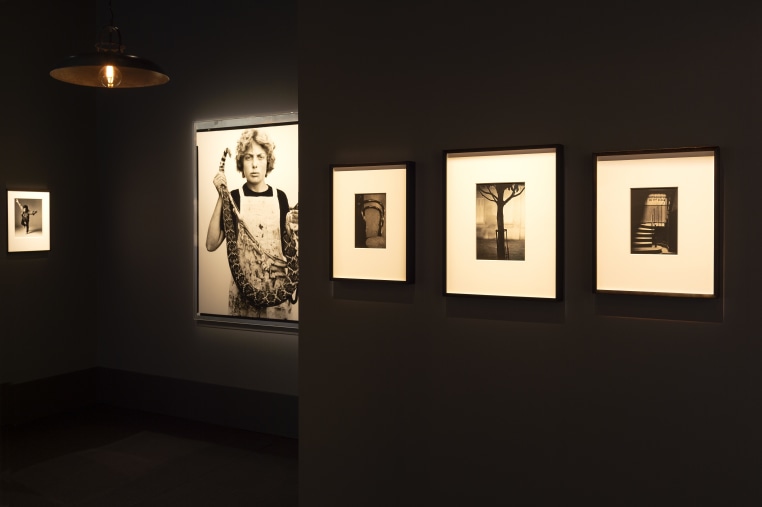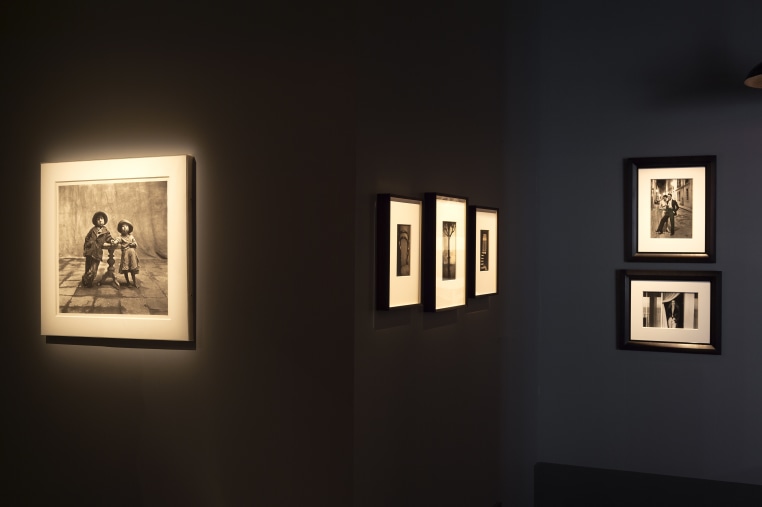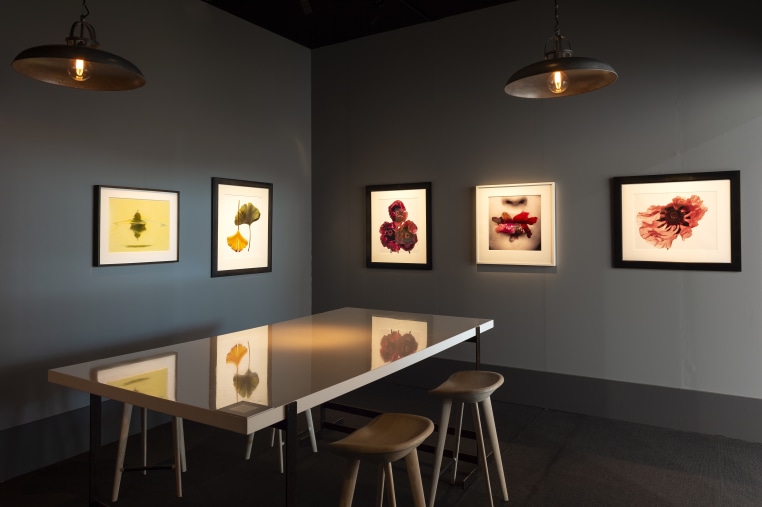HIGHLIGHTS
Murray Fredericks – BLAZE
Hamiltons has represented Murray Fredericks for over a decade. His atmospheric photographs border on
the sublime – giving rise to the emotional and physical sense of an overwhelming awe of nature.
BLAZE is Frederick’s latest series and these large-scale, colour photographs are set against the vast
expanse of the Australian landscape, in particular flooded lakes and river systems. However, unlike his
previous works, BLAZE has fire as its central theme. Using non-destructive methods, Fredericks seemingly
sets trees alight to create mesmerizing natural ‘beacons’.
The creation of this series was an extremely labour-intensive process. Frederick’s spent weeks scouring the
outback to find the perfect location, often camping for days at a time, carrying the necessary equipment
through woodlands and across sandy planes. Once satisfied with the location Fredericks painstakingly
attached bendable gas pipes up the back of dead trees, the pipes followed the trunks and leafless
branches, consciously hidden from the camera.
This method, sourced from film industry pyrotechnical specialists allows for the flames to burn but only for
a few seconds leaving enough time to capture the image, and causes no trace or damage to the trees or
the surrounding environment.
Mario Testino – A Beautiful World: Cartoneros
Mario Testino’s most recent body of work ‘A Beautiful World’ is an ongoing, artistic exploration of cultural
identity and is part of a wider project to highlight diverse beauty. As he travels the world, Testino reveals
what makes traditional culture in each country special, challenging us to find a more sustainable balance
between growth and preservation of cultural heritage.
His new chapter ‘Cartoneros’ was taken in Buenos Aires. ‘Cartoneros’ is the name given to the trade of
collecting cardboards and other materials that can be recycled or reused. It is a job created out of
necessity, and despite the important service they carry out for society, they often live in impossible and
unfair conditions throughout Latin America.
The ‘cartonero’ or rubbish carts are an unlikely subject matter, however they are part of the reality Testino
has been documenting for the past three years.
“You could think piling cardboards or disposable items together does not involve any creativity. These
objects are not meant to be gazed at as sculptural, but they end up becoming sculptural works in an
unexpected way. It makes me think of us as humans, creativity being present in all our actions even if in an
unconscious way, our sense of art is always present.” – Mario Testino
Helmut Newton – Rare Colour Prints
Hamiltons Gallery has worked with Helmut Newton and later his Foundation since 1984. Today the gallery
remains one of the few authorities on his work.
Helmut Newton began working exclusively with Rudolph Kicken from the late 1980’s. One of the first
things ‘Rudi’ implemented was a rigorous structure for the editioning of Newton’s prints and it was at this
point that Kicken and Newton began to release some of his best images in editions of 10.
At the time, Newton only made a very small selection of colour prints as editions of 10, and these prints
remain incredibly rare today. Two of these Cibachromes were taken as part of an editorial shot by Helmut
for British Vogue’s October 1973 issue, before he was recognised by some of the most renowned fashion
magazines. The photographer was already creating waves by controversially seeking to capture the
flamboyant life of the rich and famous. These prints have been considered one of Newton’s greatest
contributions to the magazine.
Throughout his career Newton contributed to leading magazine titles including Vogue, Playboy, Queen,
Nova, Marie-Claire, and Elle. Newton’s vision ultimately changed the concept behind fashion
photography, with Anna Wintour equally describing his work as “Synonymous with Vogue at its most
glamorous and mythic.” His style is still much admired today and continues to influence future generations
of contemporary fashion and portrait photographers.
Hiro – Private Collection
Hamiltons Gallery collaborated closely with Hiro until his recent passing, and maintains a close relationship
with his studio today. The gallery is thrilled to be showcasing for the first time numerous works from the
legendary Japanese photographer’s private collection.
Hiro arrived in New York in 1954 where his career began as Richard Avedon’s apprentice.
Recognising Hiro’s talent, Avedon soon sent him to Harper’s Bazaar legendary art director Alexey
Brodovitch. Within a few years Hiro had risen to extraordinary heights in the industry.
An icon of photography himself, Hiro collected some of the medium’s most iconic prints such as ;
Richard Avedon, Boyd Fortin, Thirteen Year-Old Rattlesnake Skinner, 1979 – Avedon wanted to capture a
powerful portrait of a rattlesnake skinner, and he spotted Boyd at a rattlesnake round-up in Sweetwater. It
took him three long sittings and two days to capture this portrait, with the end result one of the most
memorable and powerful portraits within ‘The American West’.
Irving Penn, Mud Glove (Street Material IV), 1975 – This version of Penn’s Mud Glove, 1975 was used as
the four-part entrance poster for his 1977 exhibition “Street Material: Photographs in Platinum Metals
1975-76” at The Metropolitan Museum of Art. As Merry Foresta observes in Master Images, after many
year of focusing on fashion work, Penn turned to making studies of debris.
“Hiro is no ordinary man. He is one of the few artists in the history of photography. He is able to bring his
fear, his isolation, his darkness, his splendid light to film.” – Richard Avedon.
